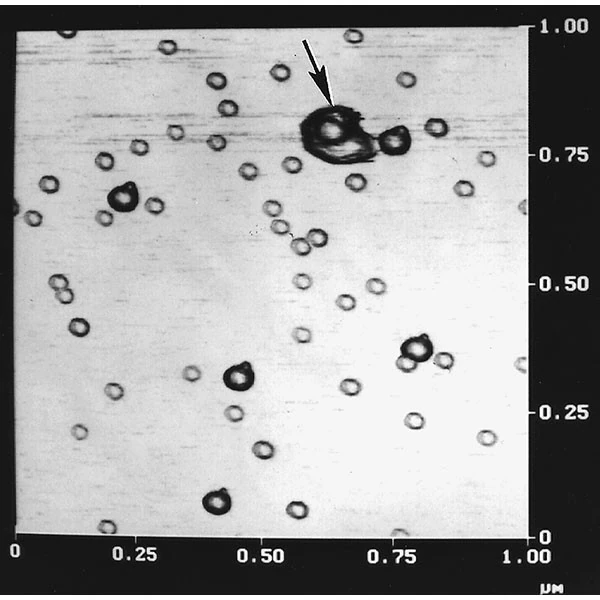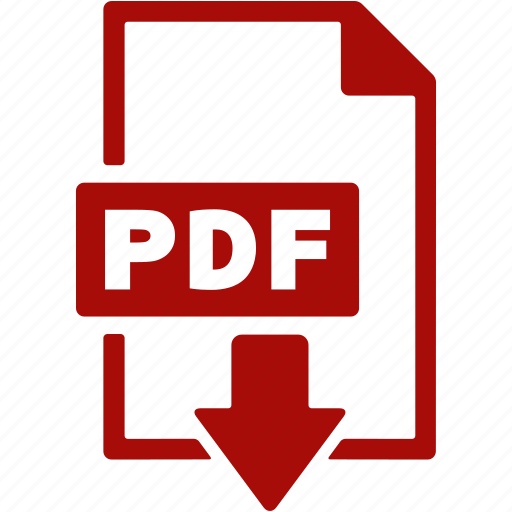Products
AFM Gold Calibration Kit
- Apertures
- Apertures 1,85 x 0,1mm
- Apertures 2,0 x 0,1mm
- Apertures 2,0 x 0,25mm
- Apertures 2,0 x 0,6mm
- Apertures 3,0 x 0,1mm
- Apertures 3,0 x 0,25mm
- Apertures 3,04 x 0,25mm
- Apertures 4,0 x 0,2mm
- Apertures 4,0 x 0,6mm
- Apertures 6.35 x 0.02mm
- Apertures 6,35 x 0,125mm
- Apertures 10,0 x 0,1mm
- Apertures 10,0 x 0,6mm
- Apertures 12,0 x 0,1mm
- Apertures 19,99 x 0,25mm
- Gilded strip apertures
- Multihole Strip Apertures
- Spray Apertures
- Thin Foil Apertures
- Tantalum Wehnelt
- Top Hat Apertures
- Aperture Cleaning
- Brushes
- Calibration
- GSR & Particle Analysis
- Light Microscopy
- SEM Calibration
- (CD) Calibration Test
- Back Scattered Electron Test
- Boron substrates
- Chessy test specimen
- Critical Dimension Magnification Standards
- Demonstration Specimens
- Glass size standards
- Gold on Carbon
- Gold Spheres on Carbon
- Line/Grid Standards
- Low & Medium Magnification
- MRS-3
- MRS-4
- MRS-6
- Multi Calibration Standard
- Polystyrene Spheres
- Silicon test specimen
- Tin on Carbon
- TEM Calibration
- Chemicals
- Cleaning
- Cryo Products
- Desiccators Cabinets
- Diamond Knives
- Dissection
- Embedding
- FIB Supplies
- Filaments
- Forensics
- General Lab Supplies
- Applicator, Sticks and Swabs
- Beakers, Cylinders and Containers
- Cell Strainer System
- Dishes and Boats
- Glass Bottom Dishes
- Laboratory Glassware
- Laboratory Tongs
- Microscopy Illuminators
- Microwave Specimen Holders
- Parafilm M®, Melinex Film
- PELCO Rotators
- Petri Dishes
- Pocket Scales
- Spatulas & Spoons
- Storage Jars, Containers & Bottles
- Thermometers
- Timers
- Ultraviolet Lamps
- Vials, Tubes and Cups
- Wire Mesh
- Gloves
- Grids
- Histology
- Immersion Oils
- Laboratory Tape
- Microscope Slides
- Pipettes and Pipettors
- PTFE Laboratory Products
- Razor- Microtome Blades
- Safety Products
- Slide Boxes, Trays & Mailers
- Slide Labels
- Spatulas and Spoons
- Staining
- Weighing Dishes
- Carbon tabs, tapes & sheets
- Mount Storage Boxes
- Planchets
- Replication Materials
- Scintillators
- Specimen Mount Grippers
- Specimen Preparation Stations
- Starter Kits
- Stubs, Mounts and Holders
- M4 Threaded, Cylinder, and Other Stubs
- Bulk Specimen Holders, M4
- Carbon Planchet Holders, M4
- Carbon, Brass, and Copper Mounts
- Cross Section Holders
- Cylinder Specimen Mounts
- E-Beam Lithography Mount, M4
- EBSD Pre-tilt Holders & Mounts, M4
- Filter Holders, M4
- Flat Sample Clip Holders
- Hitachi T-base Specimen Holders
- Metallographic Mount Holders
- Modular Stage Adapters, M4
- Mount Adapters, M4
- Multipurpose Specimen Holder
- Pin Stub Holders, M4
- Q Pin Mounts and Holders
- Rectangular Mounts
- SEMClamp Holders, M4
- SEMClip Cylinder Mounts
- SEMClip Geological
- STEM Imaging Holder, M4
- TEM Grid Holder, M4
- Tilt Specimen Holders
- Vise Type Holders
- Wafer & Large Sample Holders
- Pin Stubs Specimen Mounts and Holders
- Adapter Buttons
- Angled Pin Stub Holders
- Bulk Specimen Holders with Pin
- Carbon, Brass, and Copper, SEM Mounts
- E-Beam Lithography Mount
- EBSD Pre-tilt Holders & Mounts
- FIB Grid Holders
- Filter Holders, Pin
- Jeol Specimen Holders
- Low Profile FIB Mounts
- Low Profile SEMClip
- Metallographic Mount Holders
- Modular Stage Adapters
- Mount Adapters
- Multi Purpose / Bulk Holders
- Multi-Pin Stub Holders
- Pin Stub Specimen mounts
- Planchet Holders
- Q Pin Stubs and Holders
- Sample Holder Sets
- SEMClamp Holders
- SEMClip Pin Mounts
- Slotted Pin Stubs
- STEM Imaging Holder
- TEM Grid Holders
- Thin Section Holders
- Variable Tilt Holders
- Vise Clamp Holders
- Wafer Holders with Pin
- M4 Threaded, Cylinder, and Other Stubs
- Cabinets for Tissue Cassettes
- Cardboard, Tin Boxes & Cans
- Gel-Pak® Substrate Carriers
- Grid Storage Boxes
- Compact Modular Cabinet
- Plastic Jars, Containers & Bottles
- Membrane Boxes
- Plastic Storage Boxes
- Slide Boxes, Trays and Mailers
- Mount Storage Boxes
- Wafer Carrier Trays
- PELCO X-TREME Cases
- Zipper, Barrier Bags
- Accessories
- Aesculap® – Forceps
- Aquarius Tweezers
- Cantilever Tweezers
- Carbon Fibre tweezers
- Dumont™ Tweezers
- General Purpose Forceps
- Industrial, Economy Tweezers
- Mount Grippers
- PELCO Tweezers
- Plastic Tipped ESD Tweezers
- Plastic Tweezers, Flat & Sharp
- Plastic, Wafer Tip Styles
- Surgical Tissue Forceps
- Wafer Tweezers
- Wafer, Component, Cover Glass
- Wire Cutting Tweezers
- Zirconia Ceramic Tweezers
Characterized colloidal gold particles for:
- Characterization of scanning tip geometry
- Reliable calibration of the vertical scale of piezoelectric response
- Characterizing vertical dimensions of coadsorbed biomolecules
Three sizes of colloidal gold particles are available in a convenient kit form. The kit contains 8 numbered 15mm AFM discs with mica attached for calibration and tip characterization.
Remaining colloidal gold can be used for coadsorption with biomolecules or other samples.
16200 and 16205 Kits Contain:
- PELCO® 15mm AFM Disc Carrier
- 15mm AFM Discs, numbered with 9.9mm Mica Discs attached, 8 ea., in a 16214 PELCO® Disc Carrier
- PELCO® AFM Disc Pickup Tool
- Gold Colloid, 5nm Range, 500µl
- Gold Colloid, 15nm Range, 500µl
- Gold Colloid, 30nm Range, 500µl
- Poly-L-Lysine, 0.1%, 500µl

Fig. 1. AFM scan of 7.7, 14.6 and 28.4nm gold particles.
Note: Scan (arrow) of 28.4nm particle indicates the presence of a tip artifact.
ABSTRACT:
Colloidal gold particles have multiple uses as three-dimensional atomic force microscopy imaging standards because they are incompressible, monodisperse, and spherical. The spherical nature of the particles can be exploited to characterize scanning tip geometry.
As uniform spheres, colloidal gold particles may be used to calibrate the vertical dimensions of atomic force microscopy at the nanometer level. The monodisperse and incompressible nature of the gold can be used to characterize the vertical dimension of coadsorbed biomolecules.
Simultaneous measurements of gold with tobacco mosaic virus show that, at the same applied vertical force, the tobacco mosaic virus is undamaged by blunt tips but is compressed or disintegrated under sharper scanning styli, suggesting that specimen degradation is partly a pressure-dependent effect.
Vesenka J, Manne S, Giberson R, Marsh T, and Henderson E, 1993. Colloidal Gold Particles as an Incompressible Atomic Force Microscope Imaging Standard for Assessing the Compressibility of Biomolecules. Biophysical Journal 65:1-6.
Description
AFM Gold Calibration Kit
Colloidal gold particles have multiple uses as three-dimensional atomic force microscopy imaging standards because they are incompressible, monodisperse, and spherical.
The spherical nature of the particles can be exploited to characterize scanning tip geometry.
As uniform spheres, colloidal gold particles may be used to calibrate the vertical dimensions of atomic force microscopy at the nanometer level.
The monodisperse and incompressible nature of the gold can be used to characterize the vertical dimension of coadsorbed biomolecules.
Simultaneous measurements of gold with tobacco mosaic virus show that, at the same applied vertical force, the tobacco mosaic virus is undamaged by blunt tips but is compressed or disintegrated under sharper scanning styli, suggesting that specimen degradation is partly a pressure-dependent effect.
Technical Note
 | Download Technical Note |
| Art. | Description | Unit | Price | Quantity | |
|---|---|---|---|---|---|
| 16200 | PELCO AFM Gold Standard Kit | Each | € 117,80 |
Description
AFM Gold Calibration Kit
Colloidal gold particles have multiple uses as three-dimensional atomic force microscopy imaging standards because they are incompressible, monodisperse, and spherical.
The spherical nature of the particles can be exploited to characterize scanning tip geometry.
As uniform spheres, colloidal gold particles may be used to calibrate the vertical dimensions of atomic force microscopy at the nanometer level.
The monodisperse and incompressible nature of the gold can be used to characterize the vertical dimension of coadsorbed biomolecules.
Simultaneous measurements of gold with tobacco mosaic virus show that, at the same applied vertical force, the tobacco mosaic virus is undamaged by blunt tips but is compressed or disintegrated under sharper scanning styli, suggesting that specimen degradation is partly a pressure-dependent effect.
Technical Note
 | Download Technical Note |
| Art. | Description | Unit | Price | Quantity | |
|---|---|---|---|---|---|
| 16205 | Same as 16200 plus 2 additional gold sizes, 10 & 20nm range | Each | € 312,90 |
